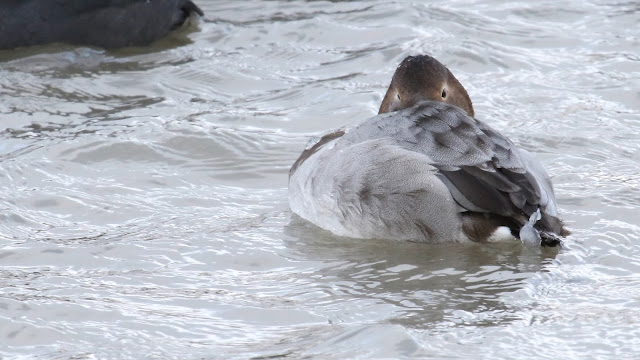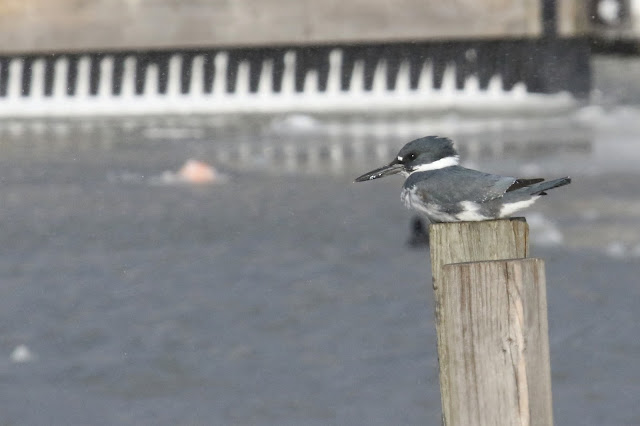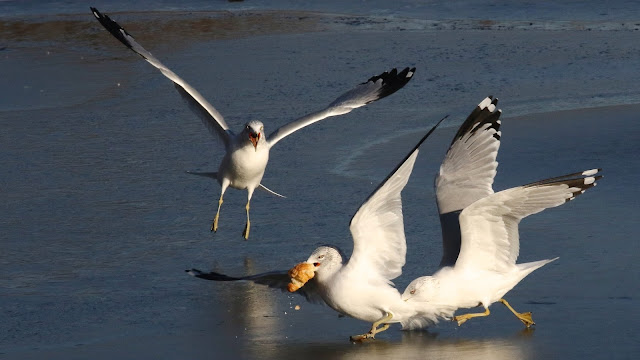I was rather surprised to find a belted kingfisher this time of year. Most of the marina and bay are frozen but there is some open water at the channel leading into Lake Erie. He was hunkered down and not enjoying the blowing snow. Megaceryle alcyon As nestlings, Belted Kingfishers have acidic stomachs that help them digest bones, fish scales, and arthropod shells. But by the time they leave the nest, their stomach chemistry apparently changes, and they begin regurgitating pellets which accumulate on the ground around fishing and roosting perches. Scientists can dissect these pellets to learn about the kingfisher’s diet without harming or even observing any wild birds. source - Cornell lab of Ornithology.








